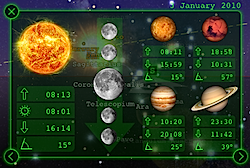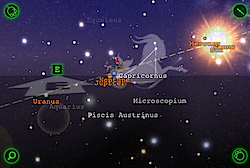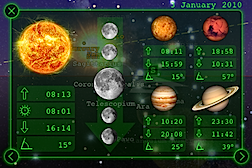Direction counts!
I took advantage of an offer to upgrade my iPhone 3G to the 3Gs model just before Christmas. I spent some time considering the alternatives, and speculating about what might become available during the next eighteen months of my new contract, but I've been more than happy with the 3G so my decision was quite an easy one. The 3Gs offered three main improvements over the 3G:
- a faster processor
- a better camera
- a 'compass'
At first glance, these improvements seem quite modest. But, as we shall see, they add up to something quite significant.
The feature which attracted me mostly was the better camera. People talked about the paltry 2MP camera on the iPhone 3G but to be honest it wasn't the resolution that was the problem - 2MP is actually adequate for the sorts of pictures I want to take with a pocket camera. The problem with the camera on the 3G was that it was just a rotten camera. I had a better camera in a Sony Clie PDA some five years ago. The camera on the 3Gs is, indeed, better than that on the previous model. It's not great, but it is just about usable.
The surprise for me is the impact of the other two features. The faster processor was firmly in my 'nice to have' category - a welcome improvement but not especially important to me. Once I tried the new model however, I quickly realised what a difference this has actually made. With the previous model, I had attributed a lack of performance in certain applications to network latency. Essentially, I believed that a few apps were simply a little too advanced for the prevailing networks to serve them well. A good example of this was Evernote, an app which seemed promising but was just too sluggish on the 3G to be very useful to me. On the newest iPhone however, Evernote really flies, and network latency does not often impinge on it's usability. Having a snappier user interface is always nice - but the 3Gs is so much more responsive as a result of its faster processor (and presumably its increased memory).
I had assumed the compass was, effectively, a gimmick. I could see how it would be occasionally useful to orient myself when using the GoogleMap application for example. But over Christmas I started to play with some of the many astronomy apps available for the iPhone. Several of these take advantage of the iPhone's built-in GPS receiver and compass, allowing the screen to show the night-sky exactly as it appears to the user based on their location and the direction they are facing. This allowed me, for instance, to identify and point out Jupiter to my actually-quite-impressed-for-once family. Direction counts!
What the iPhone 3Gs offers to its applications is a sense of location and direction. Combined, these properties can afford a powerful new functionality.
During 2009 there was a little buzz about _ augmented reality,_ with apps such as Wikitude appearing for Android and iPhone, superimposing text and images over real-time views of the physical environment. While I try to avoid predictions for the new year, I'm confident that augmented reality apps will continue to develop, and will become more interesting, during 2010. All of the hardware ingredients - a fast processor, a decent camera, GPS + compass, are present in the iPhone 3Gs. I'm looking forward to what develops as a result.
Coincidentally, my good friend Peter just alerted me to an application called Star Walk. It doesn't do anything that several other apps don't also do, but it does it so beautifully. Like all Apple products, aesthetics count for much with the iPhone. When I fired up Star Walk I had a sudden thought - that the reality had just caught up with the aesthetics of mainstream science fiction. If you have an iPhone 3Gs, I recommend you spend the £1.19 for this application, if only to admire the way it looks.
Happy new year!


